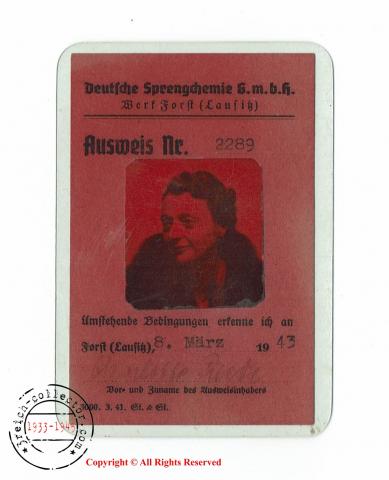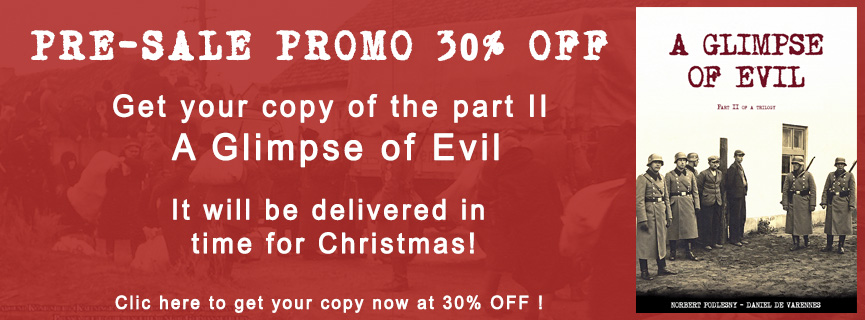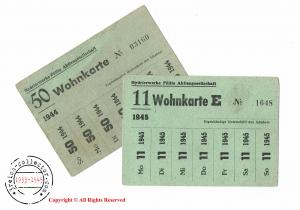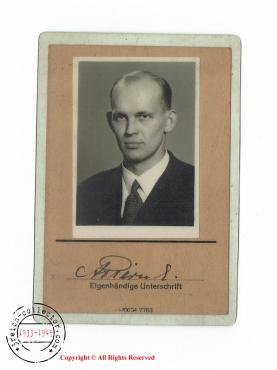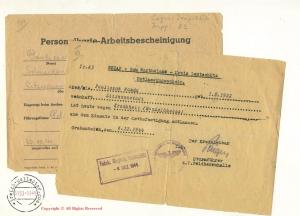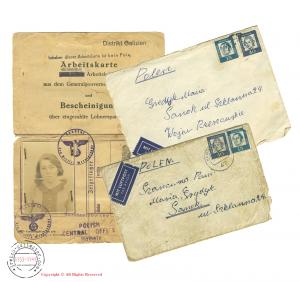WW 2 - Laminated factory ID to a woman who worked for Deutsche Sprengchemie in Forst - 1943
| Price: | $160.00 |
Laminated factory ID to a woman who worked for Deutsche Sprengchemie in Forst. Dated 1943
The explosive chemistry Forst-Scheuno was an explosives factory built in the time of the National Socialism from 1938 southeast of the city of Forst (Lausitz) in the Prussian province of Brandenburg. It was located east of the Lausitzer Neiße near today's Autostrada A18 in the district of Forst-Scheuno (today Brożek). Deutsche Sprengchemie GmbH operated the plant.
story
Construction began in 1938. It was used to produce ammunition from nitroglycerin. The 550-hectare site included around 400 buildings, 80 km of roads and 36 km of tracks. The first powder delivery took place in 1941. At peak times, 1,400 to 2,000 workers, including forced laborers as well as concentration camp prisoners, worked in the two-layer system in the factory. At the end of the Second World War, the area east of the Lausitzer Neisse was placed under Polish administration. The machines and equipment of the explosives factory were dismantled for reparation purposes and transferred to the Soviet Union. From 1959 on the Polish territory, the buildings were gutted. During the period from 1963 to 1989 some buildings of the Polish state reserve served, among other things sugar, salt and grain were stored.
Since the collapse of the Eastern Bloc, the site is freely accessible. On the site of the former blasting factory, small companies settled as well as a paintball facility. Guided tours are also offered. Due to the open terrain and the fact that highly explosive explosives and materials can still be found in subterranean bunkers, there have also been recent deaths. In 2004, an attempt was made to remove the explosive remains of soldiers from the Polish army, examining around three quarters of the area. Very good condition. It comes with photo of the bearer. This woman was assistant in chemistry laboratory.
